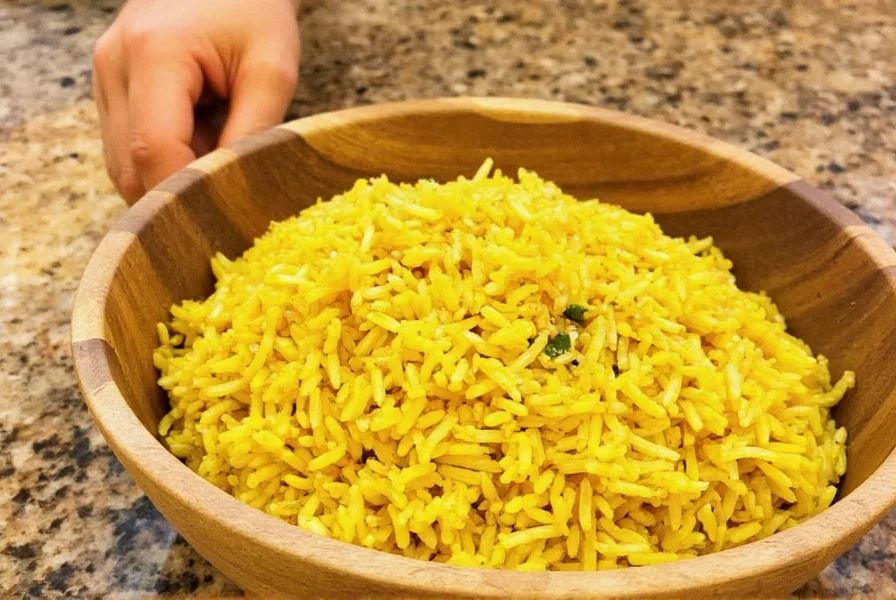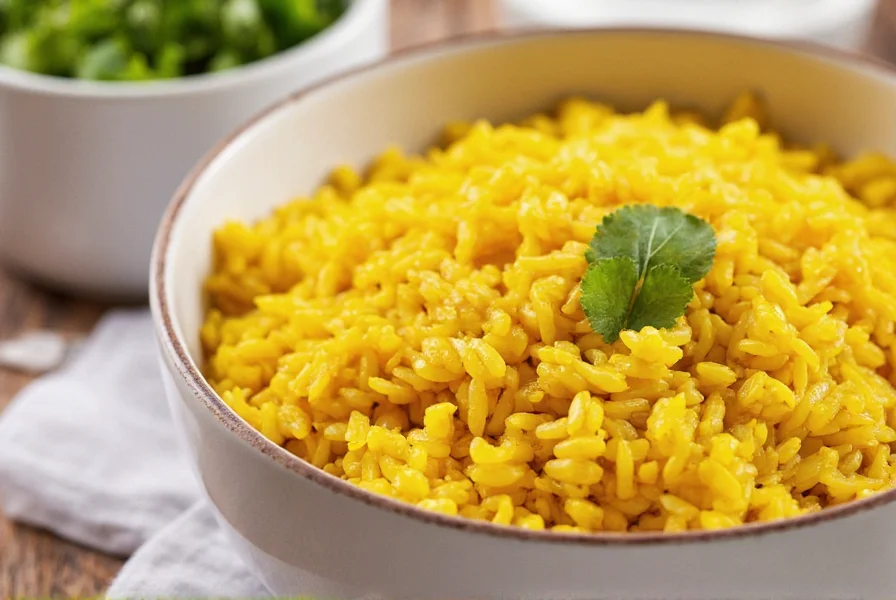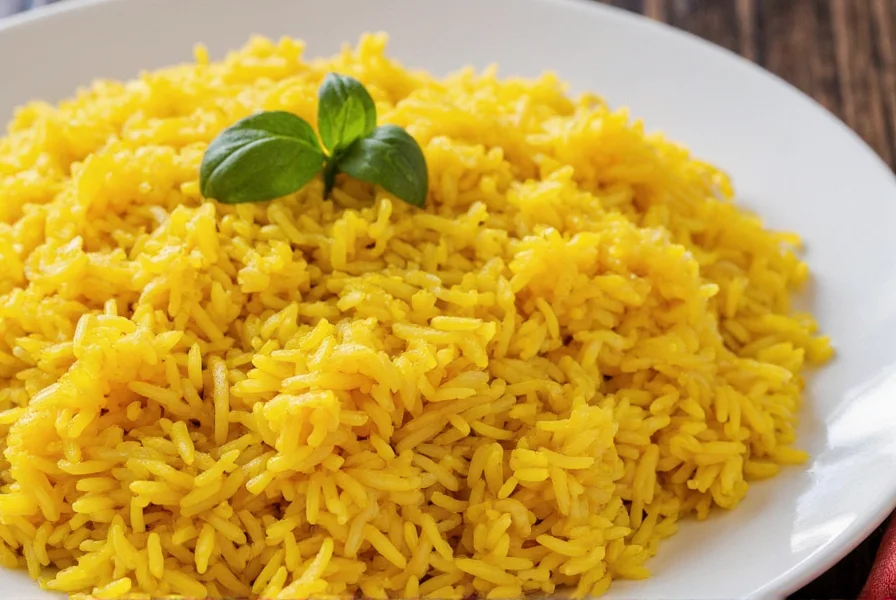The Golden Grain: Understanding Turmeric Rice
Turmeric rice transforms ordinary white or brown rice into a nutritionally enhanced side dish with its distinctive golden hue and subtle earthy flavor. This simple preparation method has been used for centuries across South Asian and Middle Eastern cuisines, valued both for its visual appeal and potential health properties. When properly prepared, turmeric rice should have separate, fluffy grains with uniform color distribution and a delicate aroma that complements various main dishes without overpowering them.

Science-Backed Health Benefits of Turmeric in Rice
The active compound in turmeric, curcumin, has been extensively studied for its anti-inflammatory and antioxidant properties. When combined with rice, turmeric creates a functional food that may support digestive health and reduce inflammation. Research shows that pairing turmeric with black pepper (containing piperine) can increase curcumin absorption by up to 2,000%. The complex carbohydrates in rice provide a stable base that helps maintain the bioavailability of these beneficial compounds during digestion.
Unlike many processed yellow rice mixes that use artificial coloring, authentic turmeric rice delivers genuine nutritional value. A single serving (1 cup cooked) typically contains approximately 200 calories, 45g carbohydrates, and provides 15-20% of the daily recommended intake of manganese and iron, plus the additional benefits from the turmeric itself.
Essential Ingredients for Perfect Turmeric Rice
Creating exceptional turmeric rice requires attention to ingredient quality and proportions:
| Ingredient | Quality Recommendation | Function |
|---|---|---|
| Rice (Basmati preferred) | Fresh, long-grain variety | Provides structure and absorbs flavors |
| Turmeric | High-curcumin content (3-5%) | Color, flavor, and health benefits |
| Black pepper | Freshly ground | Enhances curcumin absorption |
| Fat source | Coconut oil or ghee | Helps dissolve curcumin (fat-soluble) |
Step-by-Step Preparation Method
Follow this professional technique for perfectly cooked turmeric rice every time:
- Rinse and soak: Wash 1 cup basmati rice under cold water until water runs clear, then soak for 20 minutes
- Toast aromatics: Heat 1½ tablespoons coconut oil in a saucepan, add 1 teaspoon turmeric, ¼ teaspoon black pepper, and optional whole spices
- Add rice: Drain soaked rice and toast with spices for 2 minutes until fragrant
- Liquid ratio: Add 1½ cups broth or water with a pinch of salt
- Cooking method: Bring to boil, reduce heat to low, cover, and simmer for 15 minutes
- Resting period: Remove from heat and let stand covered for 10 minutes before fluffing
Avoiding Common Turmeric Rice Mistakes
Many home cooks encounter these frequent issues when preparing turmeric rice:
- Color bleeding: Using too much turmeric or adding it too late causes uneven color. Always bloom turmeric in fat first
- Bitter taste: Turmeric becomes bitter when overheated. Never fry turmeric alone for more than 30 seconds
- Muddy texture: Skipping the rice soaking step results in broken grains. Always rinse and soak long-grain rice
- Faded color: Turmeric's color degrades with prolonged cooking. Add near the beginning but don't overcook
Variations and Culinary Pairings
Turmeric rice serves as a versatile base that can be adapted to various cuisines:
- Indian style: Add cumin seeds and cardamom for traditional jeera rice variation
- Middle Eastern: Incorporate saffron threads for golden Persian rice
- Caribbean twist: Mix with coconut milk and thyme for island-inspired flavor
- Protein boost: Stir in toasted cashews or almonds after cooking for added texture
This golden rice pairs exceptionally well with grilled chicken, roasted vegetables, lentil dishes, and most curry preparations. The mild earthy flavor complements both delicate and robust main courses without competing for attention.
Storage and Reheating Guidelines
Proper storage maintains both food safety and quality:
- Cool completely within 2 hours of cooking before storing
- Store in airtight container in refrigerator for up to 4 days
- Freeze in portion-sized containers for up to 3 months
- Reheat with 1-2 teaspoons water per cup to restore moisture
- Avoid microwaving at full power—use 50-70% power for even reheating

Frequently Asked Questions
Does turmeric rice actually have health benefits or is it just colored rice?
Authentic turmeric rice made with real turmeric root or high-quality powder provides measurable health benefits. The curcumin in turmeric has documented anti-inflammatory properties, especially when combined with black pepper to enhance absorption. Unlike artificially colored rice mixes, properly prepared turmeric rice delivers both flavor and potential health advantages.
Why does my turmeric rice turn out bitter?
Bitterness typically occurs when turmeric is overheated. Turmeric should be bloomed in oil for no more than 30 seconds before adding other ingredients. Using excessive amounts (more than 1 teaspoon per cup of rice) or low-quality turmeric with high levels of curcuminoids can also create bitterness. Always use fresh, high-quality turmeric and proper cooking techniques to avoid this issue.
Can I make turmeric rice in a rice cooker?
Yes, you can make turmeric rice in a rice cooker. Rinse and soak the rice as usual, then add to the cooker with liquid. Bloom the turmeric in a small amount of oil first, then mix with the rice before starting the cooking cycle. The standard water-to-rice ratio applies (typically 1½:1), and you should still include black pepper to maximize curcumin absorption. Most rice cookers produce excellent results with this method.
How can I prevent turmeric from staining my pots and hands?
To minimize staining, use stainless steel or enameled cookware instead of aluminum. Wear disposable gloves when handling turmeric, and clean pots immediately after use with hot, soapy water. For persistent stains, make a paste of baking soda and water, apply to the stained area, and let sit for 15 minutes before scrubbing. Adding a small amount of oil when handling turmeric can also create a protective barrier on your skin.
What's the difference between turmeric rice and yellow rice?
Traditional yellow rice often uses artificial coloring or saffron, while authentic turmeric rice specifically uses turmeric as the primary coloring agent. Turmeric rice has a distinctive earthy flavor and potential health benefits from curcumin, whereas many commercial yellow rice mixes focus solely on color without nutritional benefits. True turmeric rice should have a subtle, pleasant earthiness rather than the sometimes metallic taste of artificially colored rice.











 浙公网安备
33010002000092号
浙公网安备
33010002000092号 浙B2-20120091-4
浙B2-20120091-4